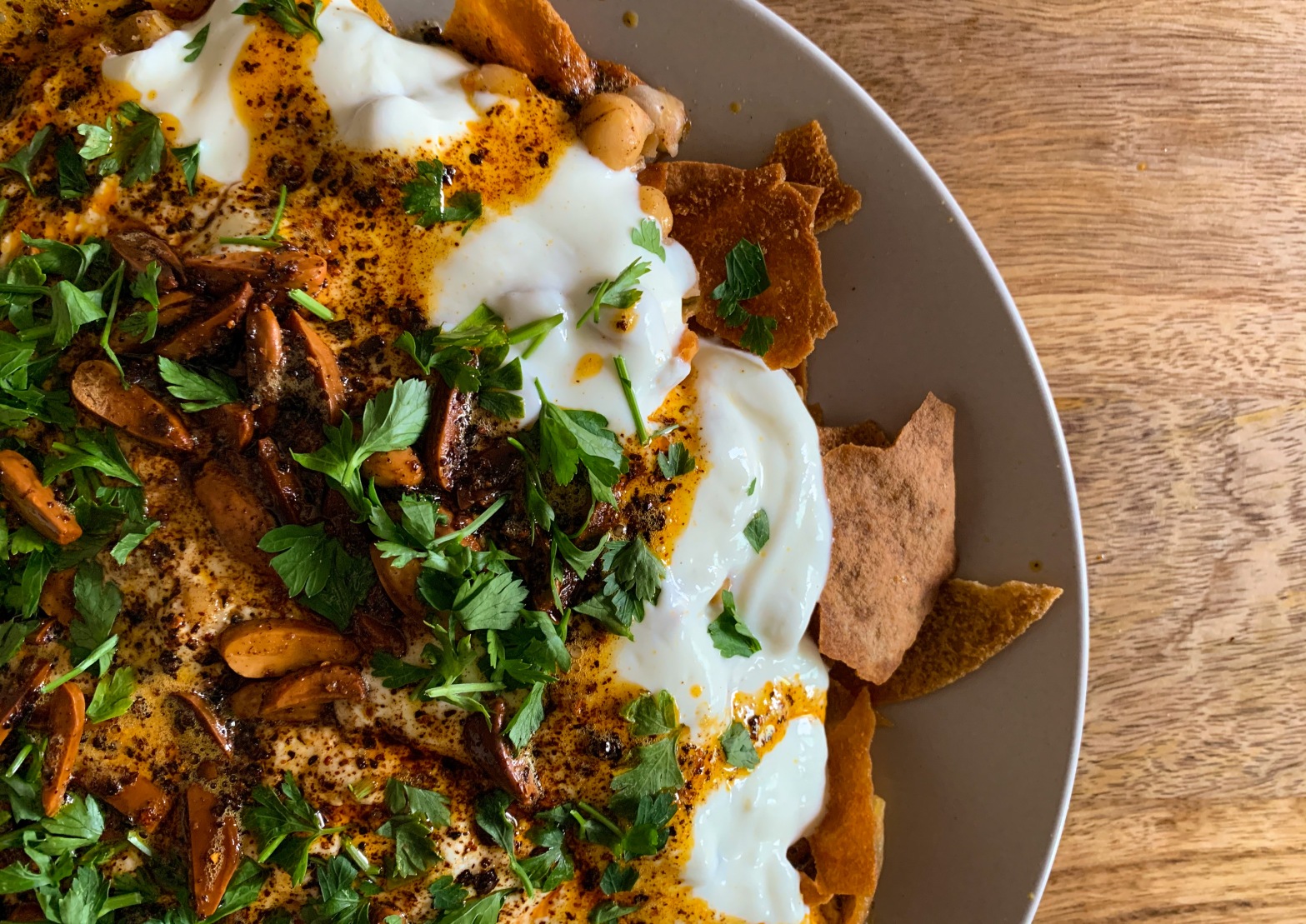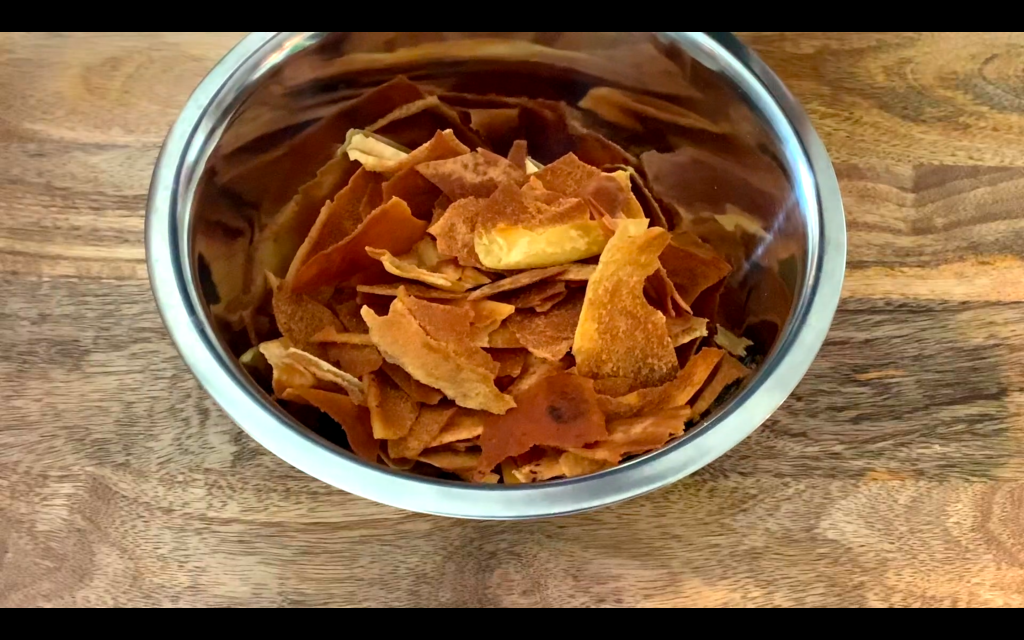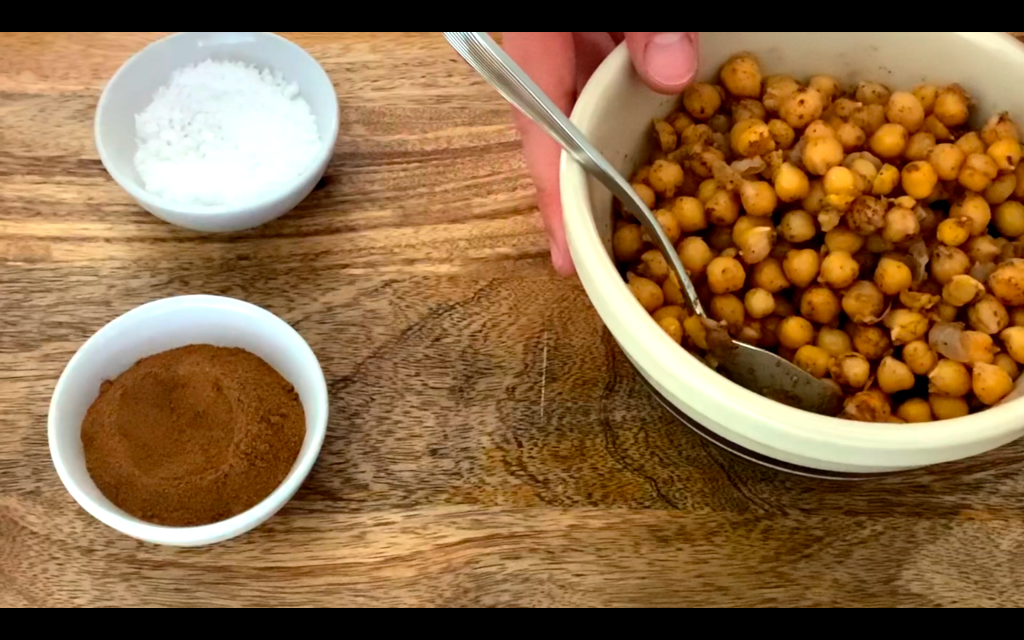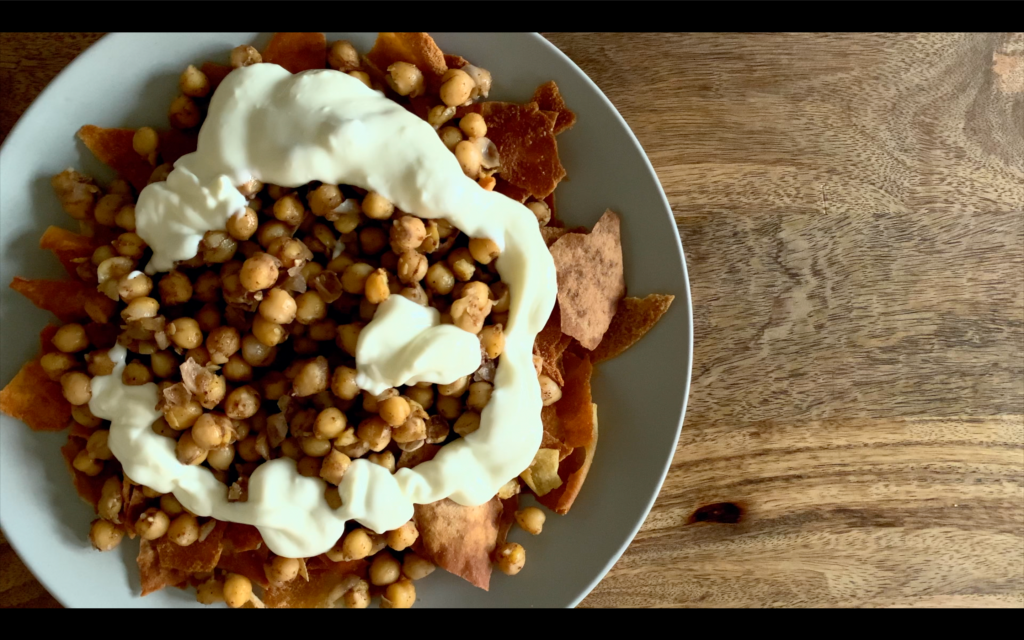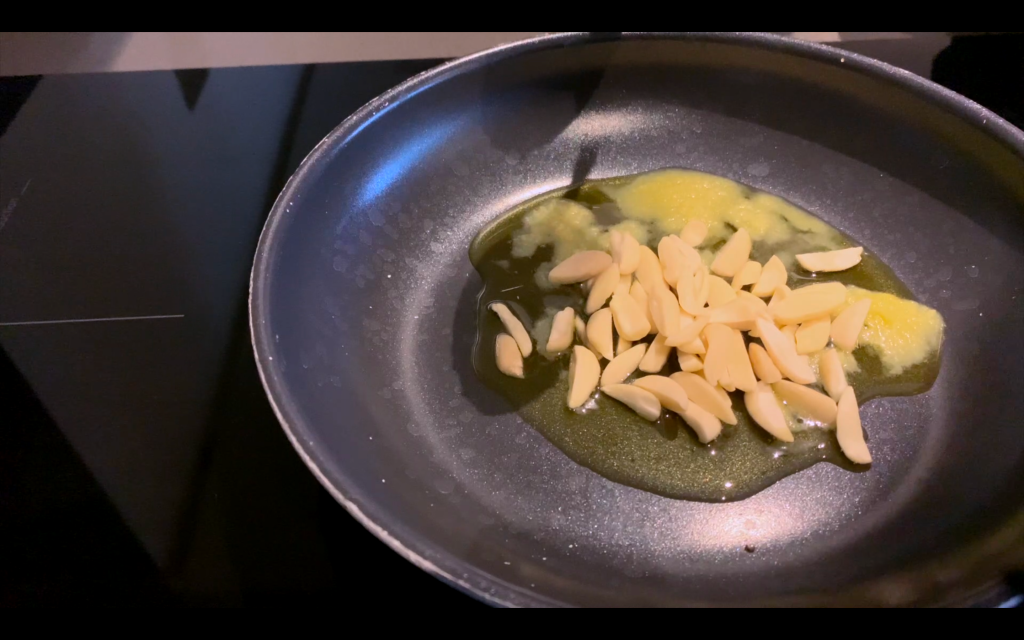This is a hearty vegan dish made with charred eggplants and chickpeas; cooked in a savory and garlicky tomato sauce.
This recipe is called Maghmour. It’s made with a few humble ingredients but with the right technique you’ll end up with a dish that’s packed with flavor that is sure to become one of your favorite go-to recipes.
INGREDIENTS
- 1 eggplant (around 0.5 kg)
- 0.5 cup olive oil
- 2 medium yellow onions, finely sliced
- 8 large cloves garlic, finely sliced
- 2 green chilies, finely chopped
- 6 tbsp tomato paste
- 2 cups cooked chickpeas
- 3 cups warm water
- 2-3 tsp salt
METHOD
- Peel the eggplants (partially or completely) and cut them into large disks, around 2 cm thick. Place the eggplants in a colander, add 2 tsp salt, toss and leave for 30 mins to extract the water from the eggplants. This might seem like a lot of salt, but the salt will draw out a lot of water from the eggplant. The water will wash away most of the salt, leaving behind eggplants that have been seasoned not just on the surface but on the inside as well.
- Pat the eggplants dry (to reduce splatter) then shallow fry them on both side in olive oil in a pan on high heat till they take some color, then remove and set aside on a paper towel.
- The key to making a rich sauce is infusing the flavor of the aromatics in the oil. In the same pan, add the sliced onion, 0.5 cup of olive oil and 2 tsp salt and cook on low heat till they wilt without taking color. Then push the onion to the side, add the sliced garlic and chili and cook on low heat to infuse the oil about 5-10 mins. The garlic will be slightly browned adding a rich umami flavor.
- Then, toss everything together and push them again to the side of the pan.
- Add the tomato paste and cook for a few mins to concentrate its natural sugars and boost its savory flavor.
- Add the cooked chickpeas (you can use canned chickpeas or dried chickpeas that you have previously soaked and boiled), toss everything together and cook for an additional 5 mins.
- Add the warm water and bring the pan to a boil, then decrease the heat to low and let it simmer covered (but very slightly cracked open) for 30 mins.
- After 30 mins, taste and adjust the sauce for seasoning. Then, add the eggplant pieces and nestle them into the sauce. Cover again and cook on low heat for 10-15 mins.
- Turn the heat off and keep them covered for an additional 10 mins to steam to make sure the eggplants get really soft.
- Serve with flatbread, fresh slices of bell pepper and sweet white onion wedges.

























